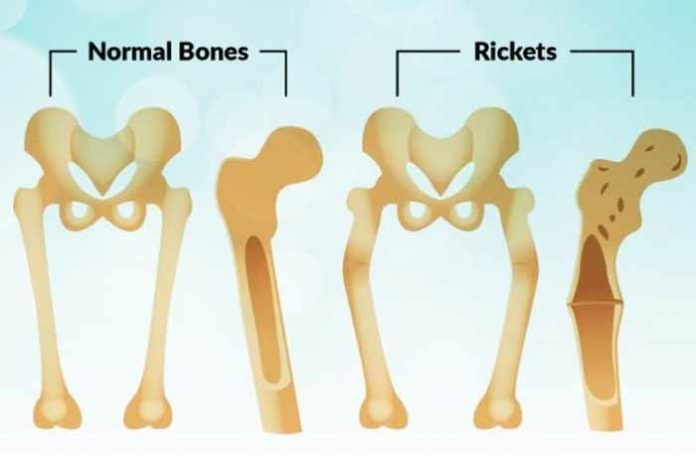
Overview and facts:
Rickets is a medical condition, which affects bones. It usually occurs during the childhood and makes the bones fragile. Although rickets may occur due to genetic abnormalities, it is always caused due to vitamin D, calcium or phosphorus deficiency.
The first description of rickets dates back to 2nd century and well documented descriptions of the conditions were found in the mid-17th Century England as a common bone condition across England.
Due to intense public health interventions, this bone disease was nearly eradicated in the U.S., but somehow, returned later. Currently, it is a common condition in underdeveloped countries. Children having dark skin or limited exposure to sunlight are at a higher risk of rickets. Rickets is more common among infants and children living in industrialized nations.
Types and Symptoms of rickets
Types of Rickets:
Basically, rickets are of three types:
1. Nutritional Rickets: It causes due to inappropriate intake of dietary vitamin D, phosphorus or calcium, or insufficient exposure to sunlight. Vitamin D deficiency is not so common in developed countries, but can happen to an infant, who is solely dependent on breastmilk, or has limited or no exposure to sunlight.
Children with dark skin require more exposure to sunlight to produce the same amount of vitamin D. This is because of melanin, which acts as a neutral filter. Nutritional rickets happens in the first few years of life only.
2. Vitamin-D Dependent: This can further be divided into two types:
- Type 1 Vitamin D-Dependent Rickets: It is a secondary defect of the defect in gene that codes for the production of renal 25(OH)D3–1-α-hydroxylase.
- Type 2 Vitamin D-Dependent Rickets: It is a rare autosomal disorder, caused by the mutation in vitamin D receptors. It does not respond to vitamin D treatments.
The two types can be differentiation by the levels of circulating calcitriol. Type 1 vitamin D-dependent rickets has higher levels of circulating calcitriols – a hormone and metabolite of vitamin D.
3. Vitamin D-Resistant Rickets: Also known as familial hypophosphatemic rickets, it is an inherited condition. It is caused when phosphate-regulating gene found on X chromosome mutates. Calcitriol levels remain within the permissible limits in this type of rickets.
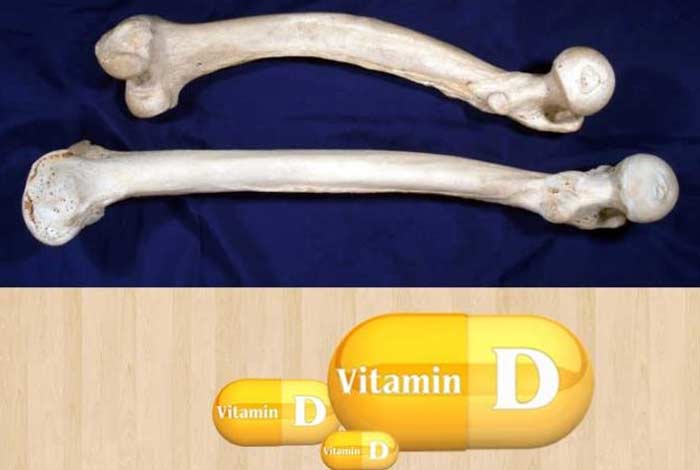
Symptoms of Rickets:
Major symptoms of rickets are as follows:
- Pain: Children with rickets generally experience pain and soreness in the affected bone. The child may be reluctant to walk, get tired easily or walk differently (waddle).
- Skeleton Deformation: Various deformations like thickening of knees, wrists and ankles, softening of skull bones, bowed legs, bent spine are common symptoms of rickets.
- Dental Problems: These may include increased cavities and weak tooth enamel.
- Poor Growth and Development: Stunting may take place in children with rickets.
- Fragile Bones: Bones are more prone to fracture as they become weak and fragile.
Other prominent symptoms:
- Floppiness in limbs of an infant
- Costochondral swelling
- Harrison groove, in which, horizontal line appears on the chest
- Reduced calcium level in the blood
- Knock-knees
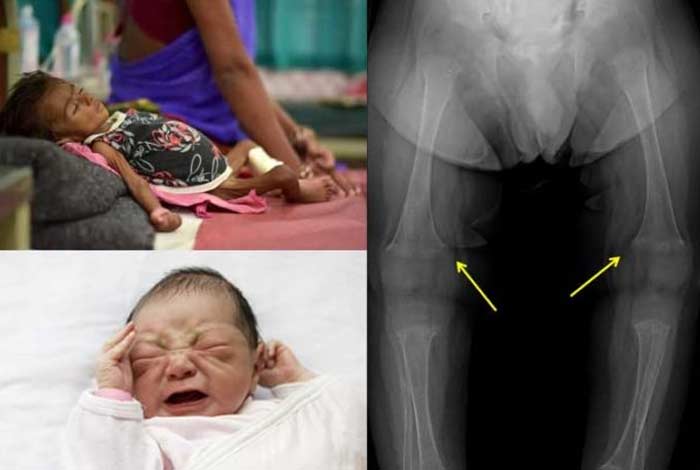
Risk Factors of Rickets
Some common risk factors associated with rickets are:
- Poverty: Poor economic conditions increases the risk of rickets as access to adequate diet and nutrition may be limited.
- Inadequate Sunlight: Children, who do not have proper exposure to sunlight are at an increased risk of rickets.
- Malnutrition: Malnutrition is the major cause of rickets. Diets having low level of vitamin D leads to rickets.
- Dark Skin: Children with dark skin type are at a higher risk of rickets as dark skin doesn’t react as quickly with sunlight to form vitamin D as fair skin does. Children with dark skin need more exposure to sun to produce the same amount of vitamin D as produced by children with fairer skin.
- Mother’s Vitamin D Deficiency During Pregnancy: If the mother is Vitamin D deficient at the time of pregnancy, then the chances of rickets in the baby increases.
- Northern Latitudes: Children in northern areas, where there is limited sun shine are more prone to get this condition.
- Premature Birth: Babies born prematurely are at an increased risk of developing rickets.
- Medications: Certain medications used to treat HIV can interfere with the body’s efficiency to produce vitamin D.
- Exclusive Breast Feeding: Breast milk is vitamin D deficient, and so, children, who are solely dependent on breastmilk, are at a higher risk of developing rickets.
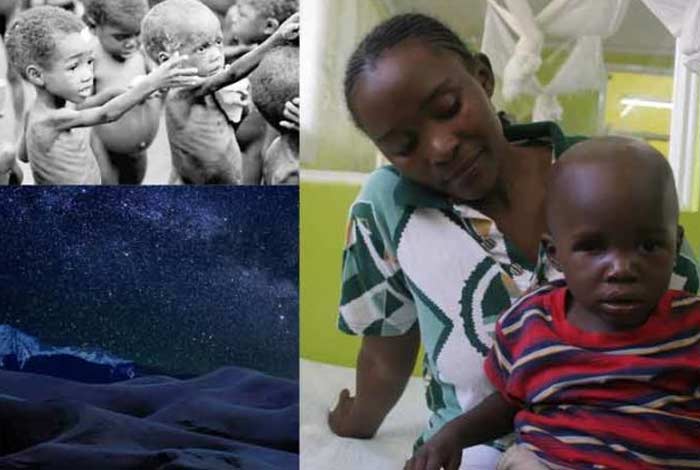
Do I have Rickets?
If your child is experiencing any of the following symptoms, it may be a sign of rickets:
- If your child is reluctant to walk or gets tired easily
- If your child experiences pain in the bones and joints
- If your child’s knees and ankles appear to be swelled up
- If your child is not growing normally (stunting)
- If there is a significant delay in the development of teeth
- If your child has bowed legs
- If he has fragile bones
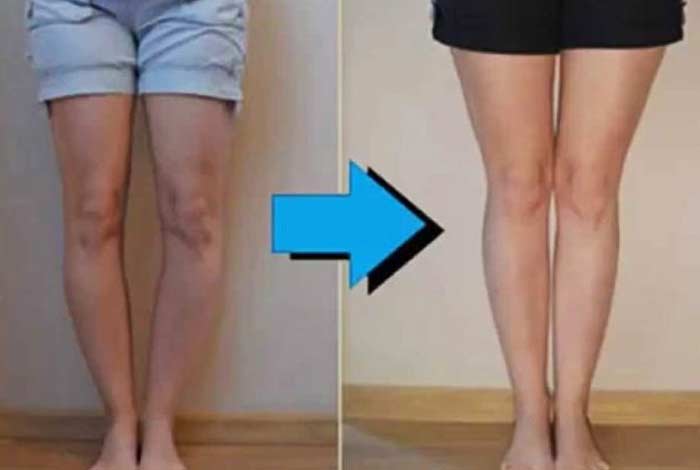
Causes and Prevention of Rickets
Causes of Rickets:
Rickets can be caused by the deficiency of vitamin D, or less commonly, calcium and phosphorus.
Vitamin D Deficiency: It is necessary to have vitamin D from two sources, viz., sunlight and food.
- Sunlight: Sun is the natural source of vitamin D. Skin produces vitamin D when it is exposed to sun. Limited sun exposure can lead to vitamin D deficiency, which can cause rickets.
- Food: Fatty fish, fat oil and egg yolk are rich in vitamin D. Low amount of vitamin D in one’s diet may lead to rickets.
Problem with Absorption: In some cases, the body is unable to process and absorb vitamin D. Some of the diseases that give rise to such a condition are:
- Celiac disease
- Inflammatory bowel disease
- Cystic fibrosis
- Kidney problem

Prevention of Rickets:
Below given are several measures taken to prevent rickets:
- Sun is a wonderful source of vitamin D. Exposure to 10-15 minutes of sunlight at midday is sufficient in summer season.
- To make sure your child does not get rickets provide him with vitamin D-rich diets. Some of the Vitamin rich foods are fatty fish, egg yolk, orange juice, milk and so on.
- In case of pregnancy, consult your doctor about taking vitamin D supplements to make sure that your child does not suffer from rickets.
- Do not exclusively feed your baby with breast milk because it is deficient in vitamin D. It is advised to give your breast infants around 400 international units of oral vitamin D on daily basis.

Diagnosis and Tests of Rickets
At the initial stage, rickets is diagnosed clinically. In this, complete nutritional and medical history of the patient is analyzed, and a physical examination is performed by a health professional.
In the absence of any acute symptom, such as tetany or seizures, X-rays of bones like ulna, femur and radial bone are taken. The X-rays are then evaluated for any sign of rickets like:
- Widening metaphysis
- Bowed femurs
- Osteopenia
- Rachitic rosary (Rib flaring)
- Multiple fractures
If any of the afore-mentioned sign is found during the evaluation, then following measurements are taken through blood test to detect for the specific reason of rickets:
- Vitamin D level
- Alkaline phosphatase
- Parathyroid hormone
- Electrolytes
In rare cases, bone biopsy can be performed.

Treatment and care of Rickets
Treatment of Rickets:
The major cause of rickets is vitamin D and calcium deficiency. Hence, it is treated mostly by increasing the intake of vitamin D and calcium. Rickets treatment may include:
- Increased exposure to sunlight
- Increased intake of vitamin D and calcium through foods rich in these nutrients
- Taking vitamin D and calcium supplements. Some of the medications that can be taken are ergocalciferol oral, calcitriol oral and so on.
- Increasing vitamin D and calcium intake through injections
If other complications like bowed legs or curved spine is found, then surgery may be needed to treat the underlying complication.
If rickets is caused due to genetic conditions, as in case of hypophosphatemic rickets, then phosphate supplements and specific forms of vitamin D are required. If your child is suffering from rickets due to genetic conditions, he may require very high dosage of specific vitamin D supplements.
Care for People with Rickets:
If your child is suffering from rickets, make sure that he/she is taking appropriate amount of vitamin D, phosphorus and calcium through daily diets. In case of an infant, dosage recommended by the physician should be strictly followed. For children and teenagers, moderate exposure to sunlight, and appropriate amount of vitamin D and calcium should be provided through foods and supplements.

OTC Medications and Self-Management Methods for Rickets
Over-the-Counter (OTC) Medications for Rickets:
For the treatment of rickets, vitamin D2 and D3 supplements are available as over-the-counter (OTC) medications in the market. However, it is a general recommendation to consult a doctor before starting on any supplement.
Self-Management Methods for Rickets:
Several measures to self-manage the condition are as follows:
Increasing vitamin D, calcium and phosphorus intake by eating food rich in these nutrients. Some of the food items that you can include in your daily diet are:
Vitamin D-rich foods:
- tuna
- yogurt
- salmon
- eggs
- cod liver oil
Calcium-rich foods:
- Green leafy vegetables
- Spinach
- Lettuce
- Kale
- Cheese
- Yogurt
Phosphorus-rich foods:
- Whole wheat cereals
- Salmon
- Halibut
- Turkey
- Beef
- Chicken
- Milk
- Cheese
- Yogurt
Increasing exposure to sunlight as skin synthesizes vitamin D when comes in contact with sunlight.

Natural Ways to Cure Rickets
Following natural remedies can be used to prevent and manage Rickets:
Exposure to Sun: Sun is a natural source of vitamin D. The Body synthesizes vitamin D when it is exposed to sun rays. Although sun exposure does not cure rickets, it promotes the absorption of calcium and phosphorus by the body and helps in making the bones stronger.
Cod Liver Oil: Cod liver oil is a well-known home remedy to treat rickets in breastfeeding mothers. It is a rich source of vitamin D and improves muscle formation. It is also known to prevent hypertension, type 1 diabetes and some cancers.
Oily Fish: Oily fish is one of the few foods that are rich in natural vitamin D. Although one can have oily fish at any time of the year, it should be consumed in winters when the day light is limited. Nevertheless, if your child’s exposure to sunlight is limited even in summers, consider feeding him oily fish. Some of the oily fish that are good source of vitamin D include sardines, pilchards, salmon, tuna, mackerel and catfish.
Calcium-Rich Diet: Since vitamin D is necessary for the absorption of calcium, calcium-rich foods can be taken to compensate the loss of the same due to vitamin D deficiency in rickets. Some good sources of calcium are:
- Dairy products like milk, cheese and yogurt
- Nuts
- Green leafy vegetables, such as cabbage, spinach and broccoli
- Fishes like pilchards and sardines

Health Tip by Expert
Rickets generally develops during the childhood due to the deficiency of vitamin D and calcium. Encourage your child to go out in sun, and do not cover him with unnecessary clothing and excessive sunscreen. To much exposure to sun is hazardous too; hence, should be limited.




